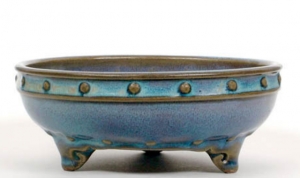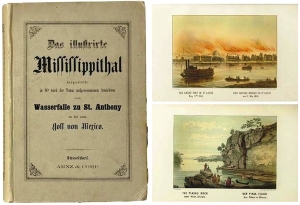|
Displaying items by tag: antique
Bonhams is set to auction a rare pair of Brescian flintlock holster pistols, circa 1660–70, on November 26. The pistols, which will be sold in the antique arms and armor sale in Knightsbridge, London, are estimated to sell for £60,000–80,000 ($97,000–130,000).
Pietro Manani, who is listed by Brescian firearms expert Nolfo di Carpegna as “one of the most active craftsmen of his time," made the pistols. The length of his working life is unknown, and some speculate that the thirty-eight known examples of Manani's work may be the work of a father-son duo.
Like perfect pitch in music, drawing remains the skill by which artistic talent is measured.
Minneapolis Institute of Arts visitors can see how 100 different artists have drawn over the past 500 years and then step into the museum’s own studio and try their hand at sketching a still life, the human figure, or whatever springs to mind. The museum has even unearthed some plaster casts of antique sculpture that can be copied, as students once did in art school.
The DIY room is the playful wrap-up to “Marks of Genius: 100 Extraordinary Drawings,” an important show of impressively varied drawings, watercolors and pastels from the museum’s collection. Running through Sept. 21, the exhibit anticipates the museum’s 100th birthday next year and will travel to museums in Grand Rapids, Mich.; Raleigh, N.C., and Omaha after it closes in Minneapolis.
Antique trade groups in the US have proposed reforms to new rules that make it illegal to sell ivory objects that were imported before 1982. Antiques made in the US that contain ivory are also prohibited from being sold. Neither type of object qualifies for the “antique exemption”, which allows the trade of objects more than 100 years old.

In an effort to halt the global boom in wildlife trafficking, the Obama administration announced that it would ban the commercial trade of elephant ivory by prohibiting its import, export and resale within the U.S., with a few exceptions. A high demand for wildlife products has left certain species, such as the African elephant and the rhinoceros, on the brink of extinction.
In a letter accompanying the new National Strategy to Combat Wildlife Trafficking Obama said, "Record high demand for wildlife products, coupled with inadequate preventative measures and weak institutions, has resulted in an explosion of illicit trade in wildlife in recent years. The entire world has a stake in protecting the world's iconic animals, and the United States is strongly committed to meeting its obligation."
Current regulations only permit ivory to be imported if it is an antique and commercial objects made before 1976 and antiques can be exported. Domestic sales are more or less unregulated. The new system will not allow the import of antique African elephant ivory or the export of any ivory that is not an antique. To be considered an antique under the new system, an object must be more than 100 years old and meet the stringent requirements outlined in the Endangered Species Act. The administration will also ban the resale of elephant ivory across state lines, except for antiques. Sales within a state will only be allowed if the seller can prove that the object was lawfully imported before 1990 for African elephants and 1975 for Asian elephants.
The Obama administration will begin implementing the new regulations in the following weeks.
In 1912, Charles Lang Freer, founder of the Freer Gallery of Art in Washington, D.C., put two rare antique biblical manuscripts on public view in his Detroit home. Over 100 years later, the Washington Codex, one of the oldest manuscripts of the four Gospels in the world, and an ancient parchment volume of Deuteronomy and Joshua, are on view in the Freer’s Peacock Room, which was decorated by James McNeill Whistler in 1876.
The last time the manuscripts were exhibited was in 2006, when they were part of a landmark exhibition of Bibles created before the year 1000. Due to their extreme sensitivity to light and fragility, the Peacock Room’s windows will remain shuttered on the third Thursday of each month.
The manuscripts will be on view at the Freer Gallery of Art through February 16, 2014.
The New York Court of Appeals reversed a decision that could have forced auction houses to reveal the identities of consignors. The original ruling was made by the Appellate Division of the New York Supreme Court in 2012 and declared that state law required that buyers be allowed to know the names of sellers in post-auction paperwork in order for the sale to be considered official.
The ruling stems from a lawsuit filed against New York auctioneer William J. Jenack. After Jenack sold a Russian antique in 2008, the buyer refused to pay, claiming that the post-sale documentation had not identified the seller. The ruling on Tuesday, December 17, stated that Jenack had provided sufficient information to the buyer for the sale to be considered binding.

The Croydon Council, a local authority in south London, will sell 24 antique Chinese ceramic vases, bowls and bottles to benefit the redevelopment of Fairfield Halls, a 50-year-old arts center in the area. Local businessman Raymond Riesco gifted the valuable objects to the Council in 1959 as part of a 230-piece collection of artifacts that included Ming dynasty bowls. The 206 objects retained by the Council will remain on view for the public.
The decision to break up the collection has drawn criticism from the museum sector. David Anderson, president of the Museum Association, told the BBC, “Croydon’s decision to sell valuable Chinese ceramics threatens not just its own reputation, but that of the museum sector as a whole. It would undermine the widespread public trust in museums and I strongly urge them to reconsider.”
Arts Council England has also voiced opposition to the sale and penned a letter to the Croydon Council earlier this month warning them that their decision was not in line with English museum standards.

Sometime after 1994, a former employee of Sweden’s National Library stole approximately 56 rare antique books once belonging to the country’s royal family. The thief, Anders Burius, eventually confessed to the theft, consigned the objects to the German auction house, Ketterer Kunst, and subsequently committed suicide.
In 1998, investigators were able to track 13 of the stolen volumes from Ketterer Kunst to the U.S. where Stephan Loewentheil, a Baltimore-based book dealer, bought two of the volumes, unaware that they were stolen. On Wednesday, July 24, 2013, the FBI were finally able to return the objects to the Swedish government, whereby officials honored Loewentheil for his assistance in recovering the books.
The recovered books include a 19th century German volume about the Mississippi River by Henry Lewis and a 17th century French book about the Louisiana territory by Louis Hennepin. The latter features the first published description of Niagara Falls and the first published landscape of the Louisiana Territory.
While Sweden and the National Library are thrilled to have the volumes back, a large portion of the works stolen by Burius are still missing.

The Rijksmuseum in the Netherlands purchased a rare antique Japanese chest once used as a television stand for $9.5 million. London’s Victoria and Albert Museum had been searching for the 17th century lacquer chest, one of only ten in the world, since 1941.
The saga of the chest began in 1640 when the head of the Dutch East India Company’s Japanese office commissioned the chest along with three others just like it. All four of the chests were later sold to a French diplomat who passed two of the works off to the British poet William Beckford. Beckford, whose daughter was married to the Duke of Hamilton, inherited the chests and they became part of the Hamilton Palace’s collection. During a sale in 1882 to raise funds for the palace’s upkeep, the Victoria and Albert Museum purchased one of the chests while the other eventually went missing. What the museum didn’t know was that an unassuming Shell Oil engineer had purchased the missing chest in 1970 for a mere $150. The elusive chest was used as everything from a television stand to a storage cabinet until auctioneer Philippe Rouillac and his brother, Aymeric, recognized it.
While the Victoria & Albert Museum would have liked to have been able to bid on the chest when it went to auction, they simply didn’t have the funds. Julia Hutt, curator of the V&A’s East Asian department, said, “I was delighted to hear the Rijksmuseum had won the auction – it is a very fitting home for the chest.”
|
|
|
|
|